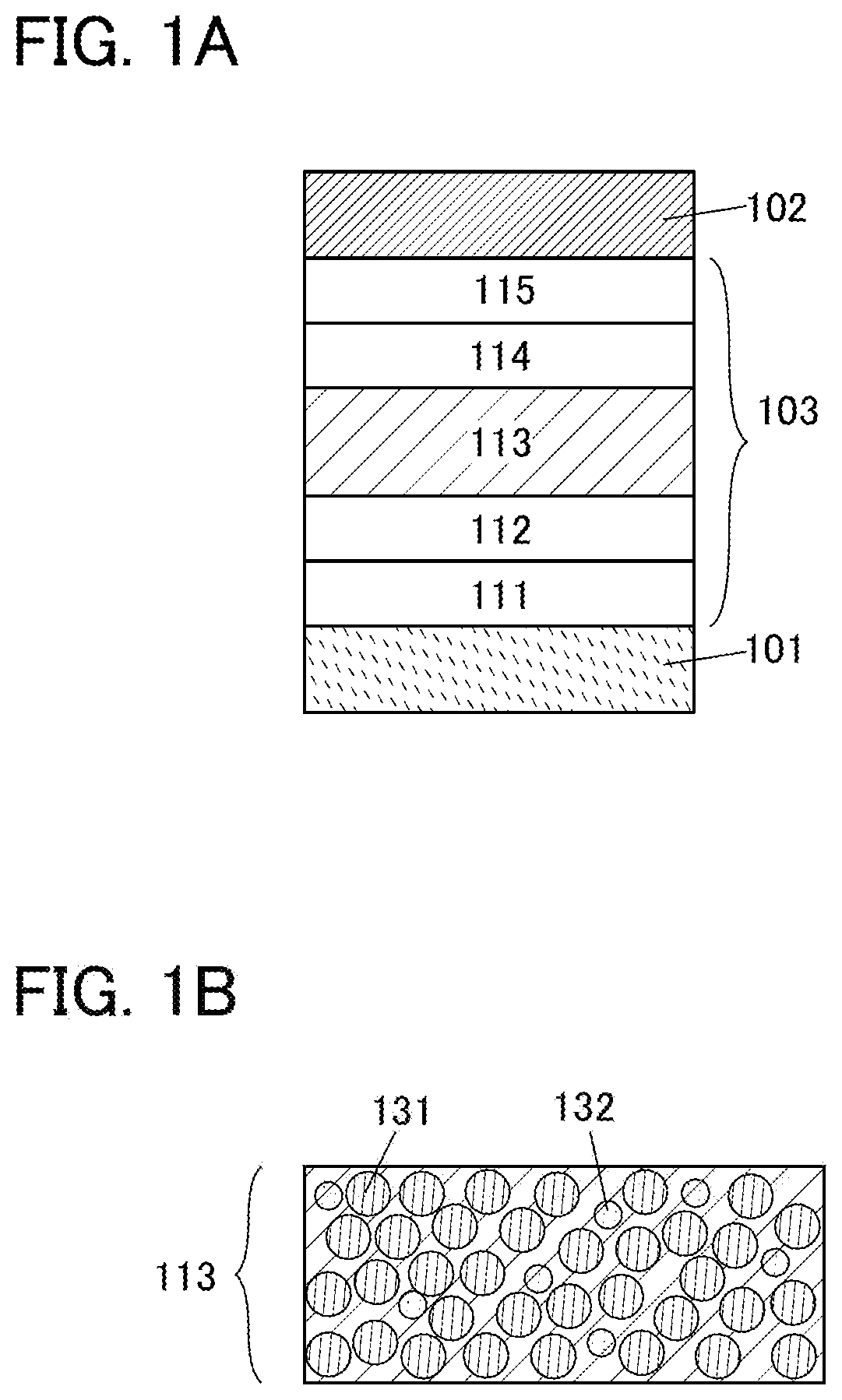Compound, Light-Emitting Device, Light-Emitting Apparatus, Electronic Device, and Lighting Device
a technology of electronic devices and light-emitting devices, which is applied in the direction of luminescent compositions, chemistry apparatus and processes, and organic chemistry, can solve the problems of reducing emission efficiency and increasing the concentration ratio of guest materials, and achieve the effect of preventing energy transfer due to the dexter mechanism
- Summary
- Abstract
- Description
- Claims
- Application Information
AI Technical Summary
Benefits of technology
Problems solved by technology
Method used
Image
Examples
embodiment 1
[0108]In this embodiment, compounds that are embodiments of the present invention will be described. A compound of one embodiment of the present invention is represented by General Formula (G1) below.
[0109]In General Formula (G1), A represents a substituted or unsubstituted condensed aromatic ring having 10 to 30 carbon atoms or a substituted or unsubstituted condensed heteroaromatic ring having 10 to 30 carbon atoms, and R1 represents a substituted or unsubstituted aryl group having 6 to 25 carbon atoms. Each of Y1 and Y2 independently represents a cycloalkyl group having a bridge structure and having 7 to 10 carbon atoms.
[0110]In another embodiment of the present invention, in General Formula (G1), R1 represents an aryl group having 6 to 25 carbon atoms, the aryl group includes two or more substituents, and each of the two or more substituents independently represents any one of an alkyl group having 3 to 10 carbon atoms, a substituted or unsubstituted cycloalkyl group having 3 to...
embodiment 2
[0153]In this embodiment, examples of light-emitting devices for which a compound of one embodiment of the present invention is preferably used will be described. As illustrated in FIG. 1A, the light-emitting device has a structure in which an EL layer 103 is positioned between a pair of electrodes, a first electrode 101 (corresponding to an anode in FIG. 1A) and a second electrode 102 (corresponding to a cathode in FIG. 1A). The EL layer 103 includes at least a light-emitting layer 113. In addition, functional layers, such as a hole-injection layer III, a hole-transport layer 112, an electron-transport layer 114, and an electron-injection layer 115, can be provided.
[0154]The light-emitting layer 113 contains a light-emitting substance (a guest material) and a host material. In the light-emitting device, voltage application between the pair of electrodes causes injection of electrons and holes from the cathode and the anode, respectively, into the EL layer 103; thus, current flows. ...
embodiment 3
[0252]In this embodiment, light-emitting devices of embodiments of the present invention will be described.
[0253]FIG. 6A illustrates an example of a light-emitting device including an EL layer that includes a light-emitting layer between a pair of electrodes. Specifically, an EL layer 103 is provided between a first electrode 101 and a second electrode 102. For example, in the case where the first electrode 101 is an anode, the EL layer 103 has a structure in which a hole-injection layer 111, a hole-transport layer 112, a light-emitting layer 113, an electron-transport layer 114, and an electron-injection layer 115 are stacked as functional layers in this order. The light-emitting layer 113 includes a host material and guest materials. A third organic compound 123 is used as the host material, and a first organic compound 121 (fluorescent substance) that has a function of converting singlet excitation energy into light emission and a second organic compound 122 (phosphorescent subst...
PUM
| Property | Measurement | Unit |
|---|---|---|
| distance | aaaaa | aaaaa |
| visible light transmittance | aaaaa | aaaaa |
| visible light reflectance | aaaaa | aaaaa |
Abstract
Description
Claims
Application Information
 Login to View More
Login to View More - R&D
- Intellectual Property
- Life Sciences
- Materials
- Tech Scout
- Unparalleled Data Quality
- Higher Quality Content
- 60% Fewer Hallucinations
Browse by: Latest US Patents, China's latest patents, Technical Efficacy Thesaurus, Application Domain, Technology Topic, Popular Technical Reports.
© 2025 PatSnap. All rights reserved.Legal|Privacy policy|Modern Slavery Act Transparency Statement|Sitemap|About US| Contact US: help@patsnap.com



